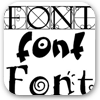TypeKit or Google Web Fonts?

Pitting Google against Adobe may sound like the tech industry's version of a clash of titans, but for the most part, the two companies don't overlap too much. When they do, however, Web professionals are quick to pick sides and stand in staunch defense of their preferred products.
The current battle raging amongst the savviest Web designers and developers is between each enterprise's respective font-as-a-service solution: Adobe's TypeKit and Google Web Fonts.
While both services offer users a plethora of different fonts that they can implement onto the websites and pages that they're designing, they're otherwise very different. For some, it may look like it's just a quality vs. convenience issue, and for others it may be based on brand loyalty. But for everyone else, the decision may not be so cut-and-dry; in that case, here's a quick comparison of TypeKit and Google Web Fonts that will, hopefully, aid you in making the best possible decision for your work.
Font Quality
Most text critics seem to agree that between the two services, Adobe TypeKit provides a higher quality selection of different fonts for users to choose from. This is largely because Google Web Fonts pulls from a variety of open source fonts, while none of the fonts in TypeKit are open source. Plus, while Google provides over 500 different font choices (an impressive number, for sure), designers can pick from over 700 fonts with TypeKit.
Money Matters
Maybe the best thing that Google Web Fonts has going for it is that it is totally free for all users. TypeKit, on the other hand, requires them to sign up for one of a variety of yearly memberships, each of which provides a different plan with various features that will meet a website's unique needs. These different plans (Trial, Personal, Portfolio, Performance and Business) are tailored toward sites based on size and come with a limit on the number of page views the user can register monthly (e.g. the Personal plan has a monthly page view limit of 50,000). The Trial membership is free, although very limited, while the others start at a $24.99 a year and go up from there.
Speed and Downtime
Google Web Fonts is a much smaller, more lightweight solution than TypeKit, meaning it tends to work quicker and with less downtime than its counterpart. This difference also makes Google Web Fonts easier to implement (it's just a copy-and-paste process). Of course, implementing TypeKit isn't really difficult, either, but it's also not nearly as simple as it is with Google Web Fonts. The big difference here is the actual speed of using the service when designing a website, where Google unquestionably outshines its competitor.
Flexibility
With TypeKit, users are not able to download fonts locally to test out on their mockups; instead, they have to add a font to a domain and then work on typography during the site development phase. Google Web Fonts, on the other hand, lets all users download fonts locally (for free), meaning they can send their clients accurate (or close enough) mockups of the site for approval before they begin building it. For many designers, this is an essential feature that saves them a lot of stress in the development process.
Browser Interface
As with all Adobe products, TypeKit provides users with a sleek, simple and intuitive interface for browsing, selecting and using fonts. Although Google Web Fonts also features an easy-to-use interface, TypeKit has the superior search capabilities, which makes it much quicker and easier to find the font you want, ultimately increasing efficiency for designers.
The Winner
Adobe TypeKit is certainly a top-notch service, and I think most designers would agree that it has a superior collection of font choices for users. That being said, Google Web Fonts takes the win here, largely because it is faster, easier to implement and more flexible than TypeKit. Plus, it's free to all users, all the time, and you really can't beat that price.

Subscribe to Our Newsletter!
Latest in Web Design









